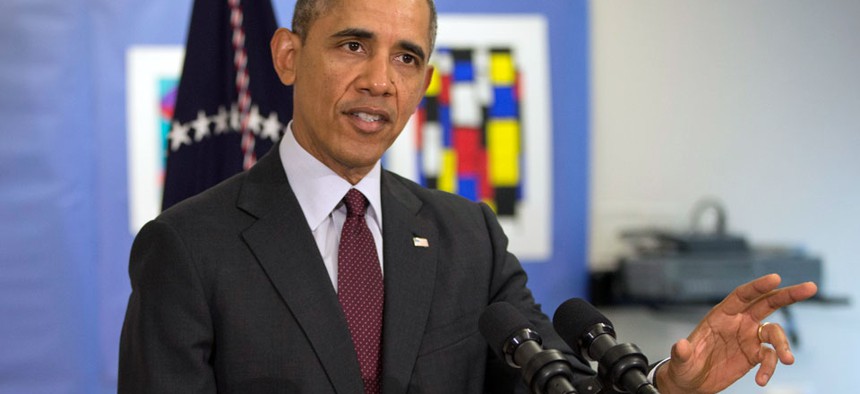Obama Budget Plan Challenges Cuts to Training, Customer Service
President deals another blow to agency travel and conference spending.
President Obama’s $3.9 trillion fiscal 2015 budget gives a nod to bipartisanship on agreed-upon spending levels, but it takes on political opponents by calling to restore agency training and customer service.
“Our citizens and businesses expect their government to provide the same level of service experienced in the private sector and we intend to deliver,” Obama said in his budget message released on Tuesday. “The budget includes initiatives that will lead to better, faster and smarter services, both online and in-person.”
His plan calls on agencies to “share services and leverage the buying power of the government to bring greater value and efficiency for taxpayer dollars.” It also “invests in the government’s most important resource, its workers, ensuring that we can attract and retain the best talent in the federal workforce and foster a culture of excellence,” Obama said.
While adhering to the spending caps agreed upon in January’s bipartisan congressional budget agreement, the budget’s proposed $1.5 trillion in discretionary spending would “put a stop to short-sighted cuts that compromise efficiency and effectiveness, and cost money over the long run,” said an Office of Management and Budget summary. Examples cited included “growing deferred maintenance backlogs, sharp cuts to federal employee training, and erosions in customer service at agencies like the Social Security Administration and the Internal Revenue Service.”
The SSA’s budget would rise from $8.9 billion in fiscal 2014 to $9.1 billion under the budget. While the Treasury Department’s overall budget would decline slightly, Obama is asking for a multiyear “investment” for the IRS of $12.5 billion, including a program integrity initiative. The new spending would improve Internet and in-person services -- for example, spending $100 million to reduce wait times for Social Security checks, and to build an e-Benefits portal to speed processes at the Veterans Affairs Department.
Agency travel and conference attendance would continue to be reduced, the budget says, having saved $3 billion since 2012. Administrative efficiencies in recent years through such efforts as strategic sourcing have saved $16 billion and will continue, the budget says. Management consolidation—a 20 percent cut in the Defense Department’s headquarters staff, for example—would further reduce administrative overhead, according to the plan.
The Office of Personnel Management would receive funding to build a stronger onboarding program for new Senior Executive Service employees as well as “new leadership and engagement training opportunities. Also, “the administration is committed to working with labor groups to improve hiring outcomes by exploring flexible approaches to recruit and retain individuals with high-demand talents and skills,” the budget says. Beginning in 2015, it will launch demonstration projects to “identify promising practices in recruiting, hiring, onboarding, and deploying talent across agencies,” while boosting diversity and reducing skills gaps.
The big exception to the bipartisan pact is the budget’s proposal for a “fully paid for $56 billion Opportunity, Growth, and Security Initiative, split evenly between defense and non-defense, that would invest in research, education and technological modernization.
The budget would also replace sequestration over the next few years, aiming to reduce deficits to 1.6 percent of GDP by 2024, and stabilize debt as a share of the economy by 2015, OMB said, “and puts it on a declining path after that.”
NEXT STORY: Can't Miss Business Books for Spring and Summer








